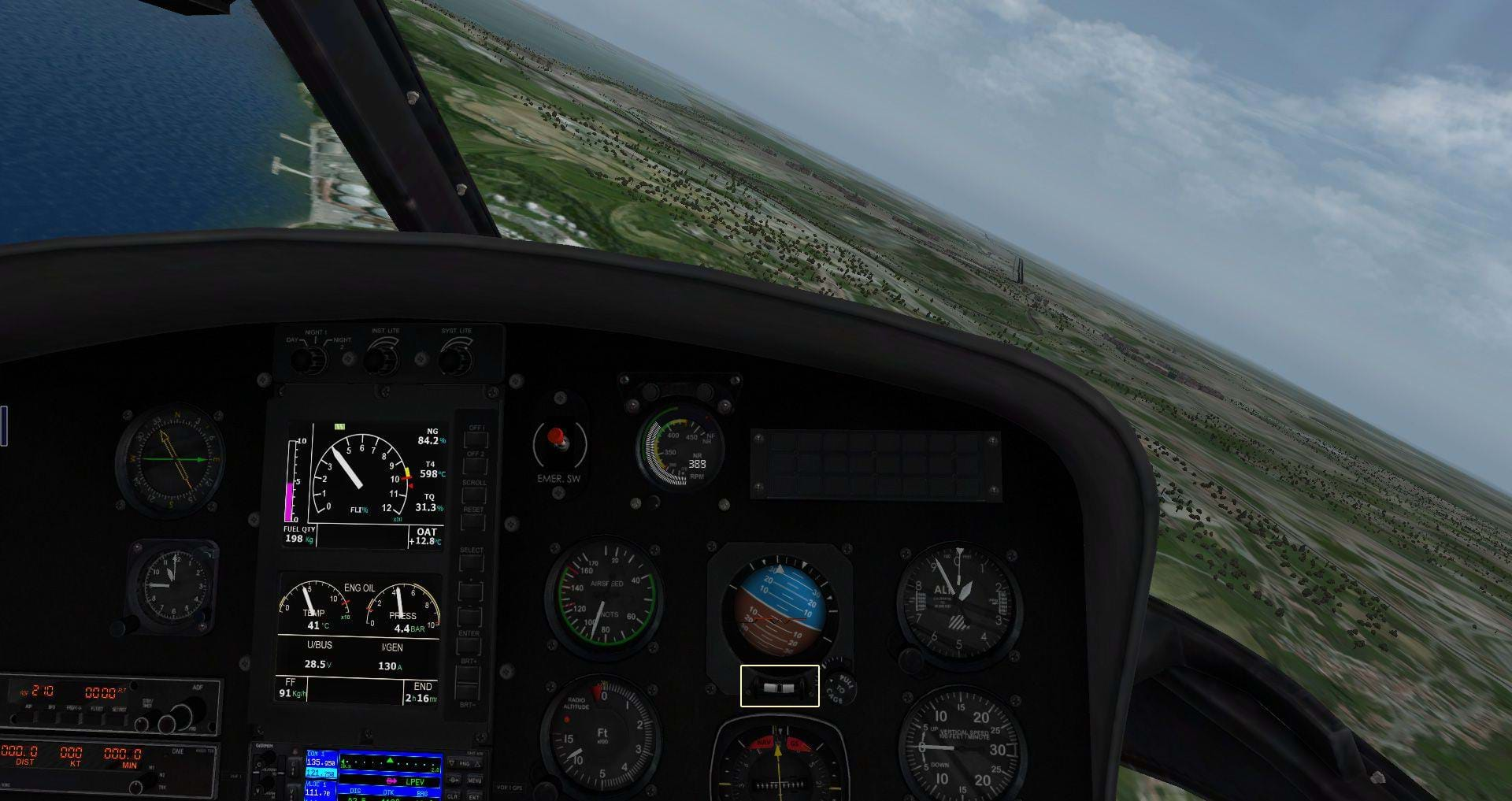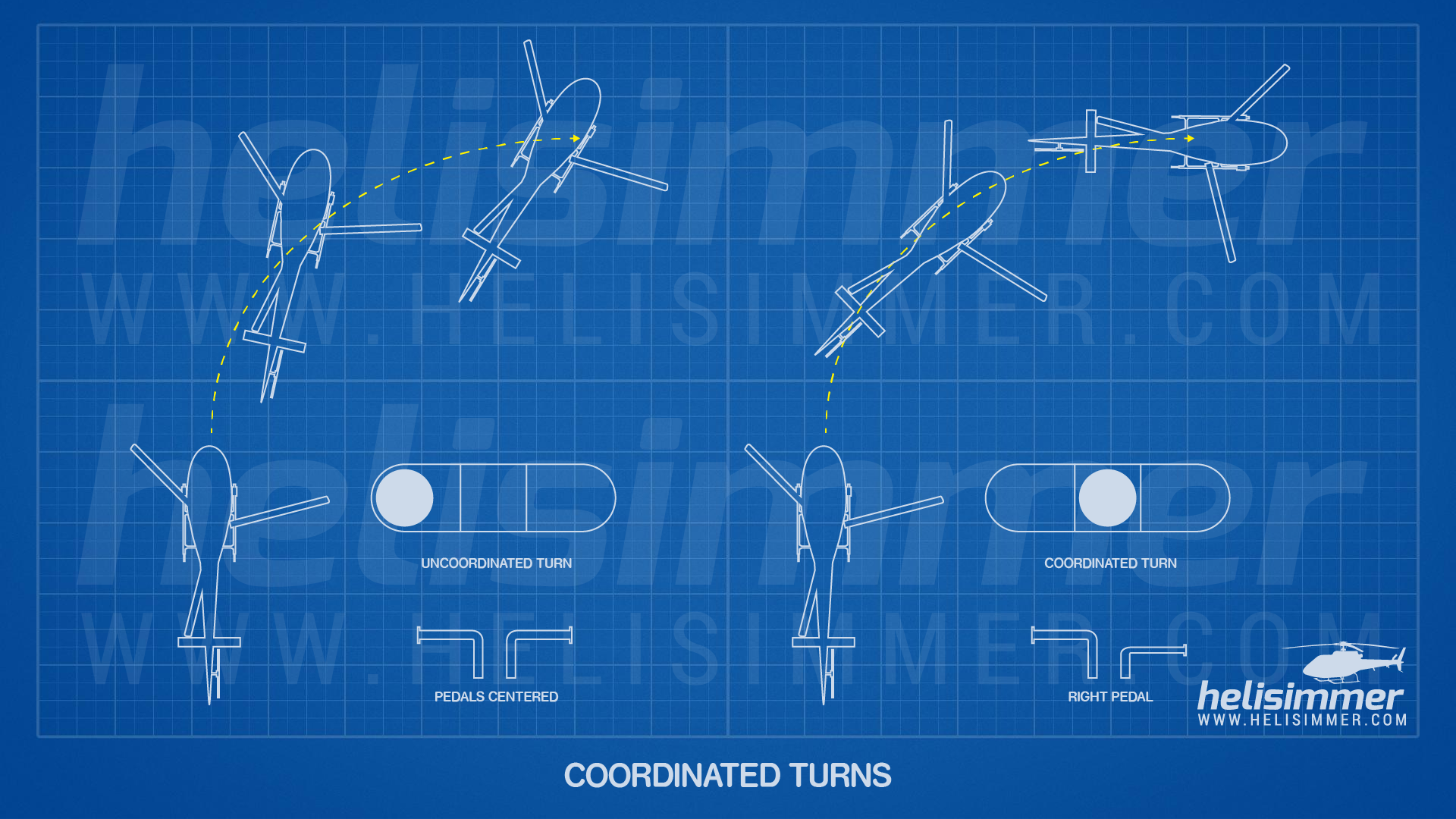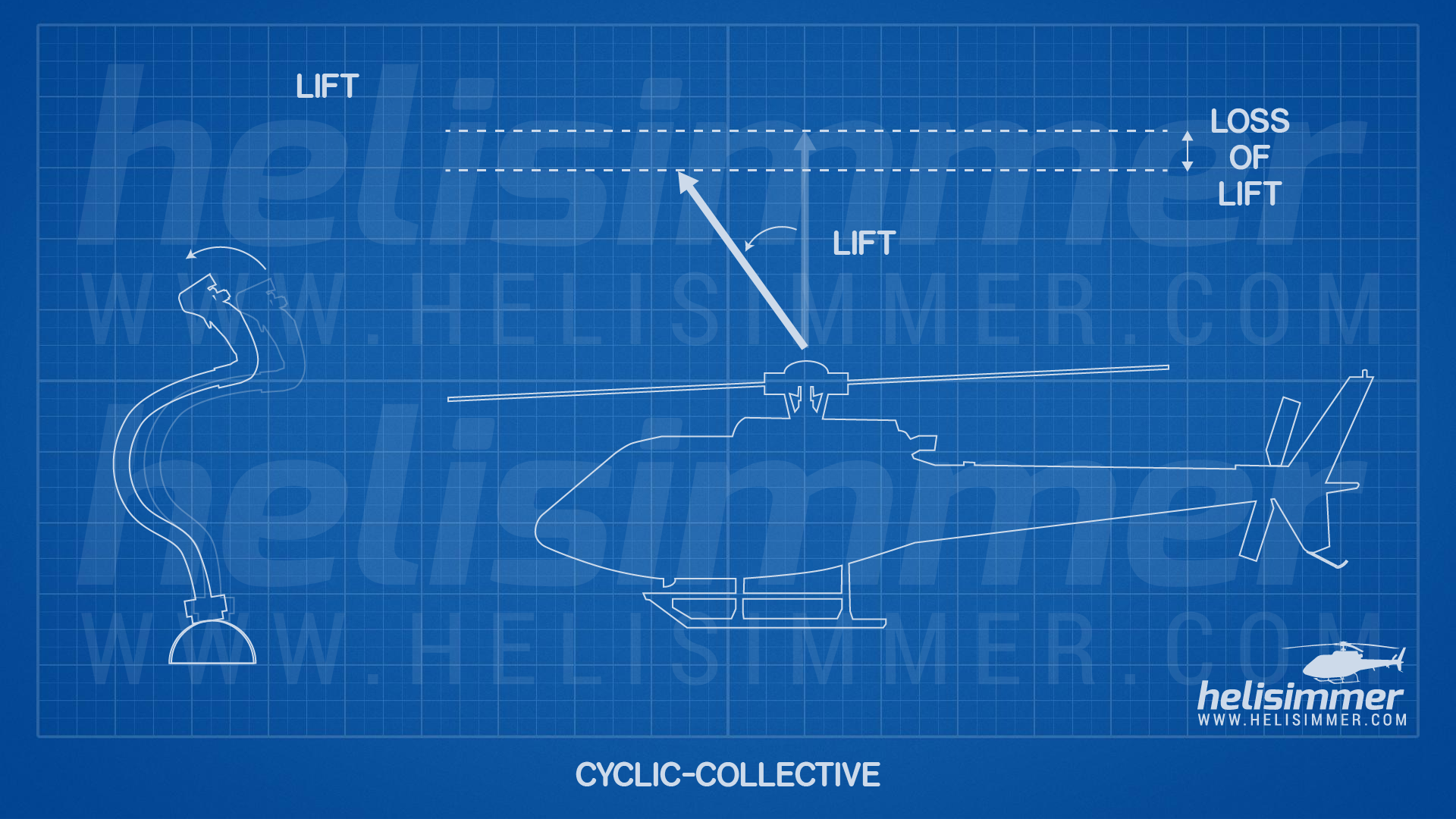Turning your helicopter is not hard to do but it will require you to keep an eye on a lot of things simultaneously.
First of all, you should look outside, in both directions, and see if there are no other aircraft or obstacles that can put you or others in danger when you proceed to do your turn. As with anything else, situational awareness is highly important.
If everything's clear, you'll start by pulling the cyclic towards the direction you need to turn to (left or right). The first thing you'll need to take a look at is your altitude and your VSI (Vertical Speed Indicator). You will probably want to keep your altitude and speed steady so you'll need to adjust your cyclic and/or collective accordingly as well.
Step on the ball
You'll probably remember this from your fixed-wing flights. Most helicopters also have a turn indicator (the ball) which you need to keep centered in order to perform turning maneuvers in a coordinated fashio. The same principle applies to both fixed-wing and helicopters. "Step on the ball" and keep your turn coordinated all the way.
You see, aircraft have a tendency to keep the fuselage pointed in the original direction of flight. If you only use cyclic, you will get a slight deviation of the yaw but not enough to perform a correct turn and you'll be "slipping" the curve.
You'll have to pay attention not to use too much anti-torque pedal or you'll have the opposite effect (too much yaw).
You will need to keep your eyes both outside and on the panel. Scan your instruments in a routine manner. I usually look outside and then check my VSI, altitude indicator, airspeed indicator and turn coordinator gauge. Rinse and repeat.
Breaking up the turns
Turns are not extremely complicated but, as with anything you wish to master, they require you to practice a lot.
Being a complex maneuver, you can start by breaking it up and practicing things separately, adding more complexity as you move forward.
So, to start with, you can worry only about your turn coordinator at first. Start your turns and keep stepping on the ball. Once you master this part, start worrying about altitude as well. But, to start with, just keep those turns perfectly coordinated. The rest will come.
Don't forget that, when you move your cyclic, your lift value will shift and you will lose altitude. So you should expect some altitude loss, that you will need to compensate with added collective.
After you master both direction and altitude, start worrying about speed. which you'll have to control with your cyclic. Not an easy dance, is it?
Not trying to do everything at first, will allow you to focus on the first part and gain some muscle memory as well as get you more comfortable for you to start adding some more load to your work.
Keep on practicing and, soon enough, you'll start mastering your turns. As with everything regarding helicopters, it's not easy. But you will, eventually, be in full control and master it.
Credits
I’d like to thank Joe Hudson for all the help and support while writing this article.
How to fly helicopters series
Check out the other articles on this series. Click here to see all the available material we have.










